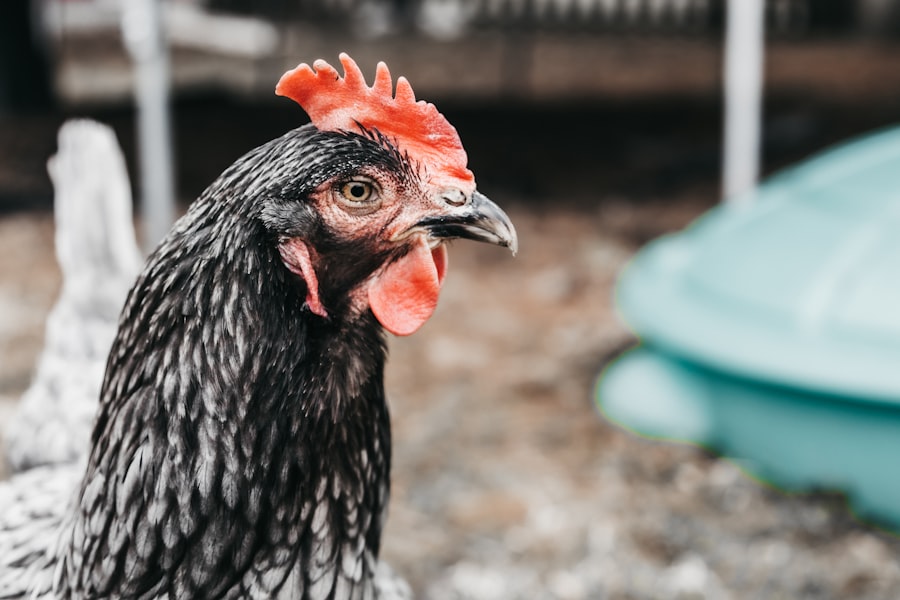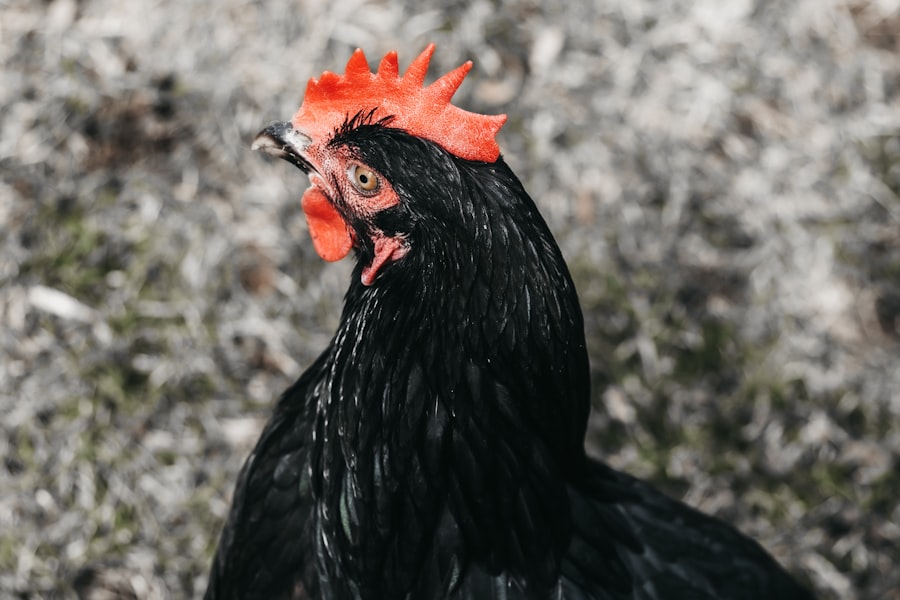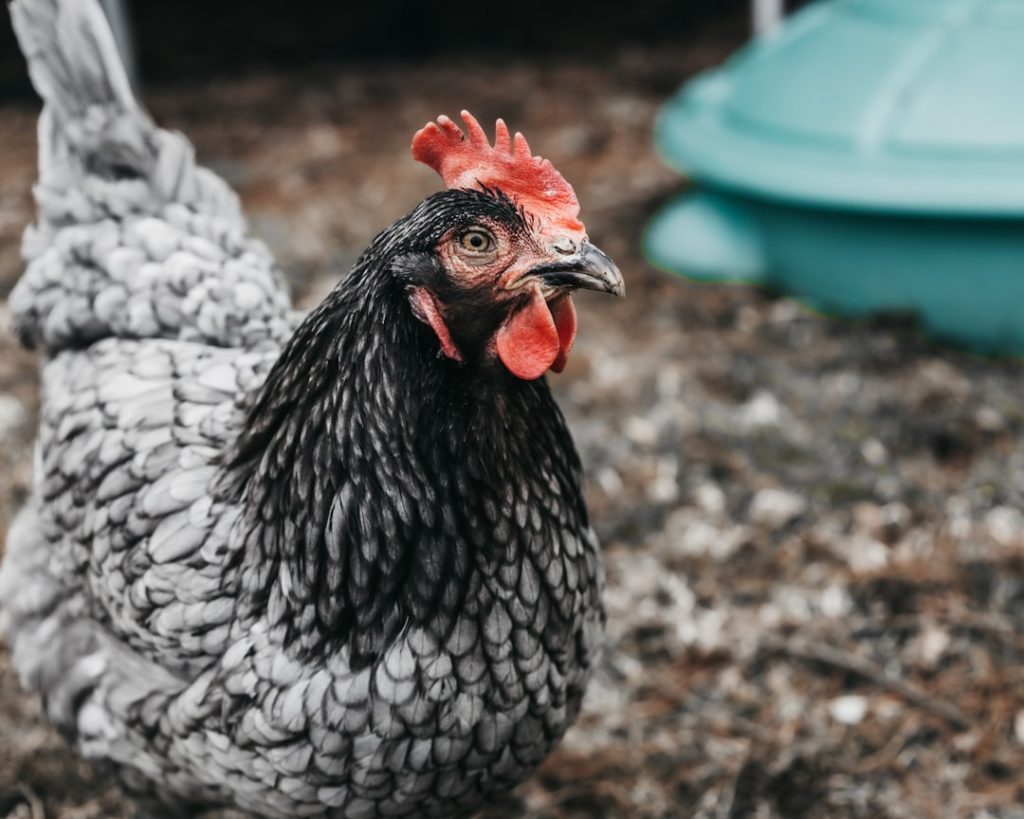Light plays a crucial role in the life of chickens, affecting their behavior, health, and egg production. Chickens, like many other animals, have a natural circadian rhythm that is influenced by the amount of light they receive. This circadian rhythm regulates their sleep-wake cycle, hormone production, and overall well-being.
In the wild, chickens rely on the natural cycle of daylight and darkness to regulate their internal clock. However, for chickens kept in captivity, such as in a coop or barn, it is important to provide them with artificial light to ensure they receive the necessary amount of light each day. In addition to regulating their internal clock, light also has a direct impact on the reproductive system of chickens.
The length of daylight can trigger the production of hormones that are essential for egg laying. In the winter months, when daylight hours are shorter, chickens naturally produce fewer eggs or may stop laying altogether. By providing artificial light, chicken keepers can simulate longer daylight hours, encouraging hens to continue laying eggs throughout the winter.
Overall, understanding the importance of light for chickens is essential for ensuring their well-being and productivity.
Table of Contents
- 1 Determining the Ideal Light Schedule for Chickens
- 2 Factors to Consider When Keeping a Light on Chickens
- 3 Effects of Light Duration on Chicken Behavior and Egg Production
- 4 Potential Risks of Keeping a Light on Chickens for Too Long
- 5 Tips for Safely and Effectively Using Light for Chickens
- 6 Adjusting Light Duration for Different Seasons and Chicken Life Stages
- 7 FAQs
Key Takeaways
- Proper lighting is crucial for the health and well-being of chickens, impacting their behavior, egg production, and overall growth.
- The ideal light schedule for chickens should mimic natural daylight patterns, providing 14-16 hours of light per day for optimal egg production.
- Factors to consider when keeping a light on chickens include the type of light source, intensity, and placement to ensure even distribution and minimize stress.
- Light duration significantly affects chicken behavior and egg production, with longer light exposure leading to increased activity and egg laying.
- Keeping a light on chickens for too long can disrupt their natural circadian rhythm, leading to stress, decreased egg production, and potential health issues.
Determining the Ideal Light Schedule for Chickens
Understanding Chickens’ Natural Behavior
When determining the ideal light schedule for chickens, it is essential to consider their natural behavior and the specific goals of the chicken keeper. In general, chickens require around 14-16 hours of light each day to maintain optimal health and egg production. This can be achieved by providing both natural daylight and supplemental artificial light.
The Ideal Light Schedule
The ideal light schedule for chickens typically involves providing 14-16 hours of light followed by 8-10 hours of darkness to mimic a natural day-night cycle. For chicken keepers looking to maximize egg production, it is common to provide artificial light in the early morning or late evening to extend the daylight hours. This extended light schedule can help stimulate egg laying during the winter months when natural daylight is limited.
Striking a Balance
However, it is crucial to strike a balance and not overexpose the chickens to light, as this can have negative effects on their health and well-being.
Factors to Consider When Keeping a Light on Chickens

When keeping a light on chickens, there are several factors that need to be taken into consideration to ensure their well-being and productivity. One important factor is the intensity of the light. Chickens require a certain level of light intensity to effectively regulate their circadian rhythm and stimulate hormone production for egg laying.
It is important to use a light source that provides adequate intensity without causing discomfort or stress to the chickens. Another factor to consider is the color temperature of the light. Natural daylight has a specific color temperature that changes throughout the day, ranging from warm tones in the morning to cooler tones in the afternoon.
When using artificial light for chickens, it is beneficial to mimic this natural color temperature to help regulate their internal clock and promote natural behavior. Additionally, the placement of the light source is crucial. The light should be evenly distributed throughout the coop or barn to ensure that all chickens receive an equal amount of light.
It is also important to consider the duration of the light exposure and provide periods of darkness to allow the chickens to rest and recharge. Overall, there are several factors to consider when keeping a light on chickens, and careful attention to these factors is essential for their health and well-being.
Effects of Light Duration on Chicken Behavior and Egg Production
The duration of light exposure has a significant impact on chicken behavior and egg production. As previously mentioned, chickens require around 14-16 hours of light each day to maintain optimal health and egg production. When exposed to shorter daylight hours, such as during the winter months, chickens naturally reduce their egg production or may stop laying altogether.
By providing artificial light to extend the daylight hours, chicken keepers can stimulate egg laying and maintain consistent production throughout the year. In addition to egg production, light duration also affects chicken behavior. Chickens are diurnal animals, meaning they are most active during daylight hours and rest during the night.
When exposed to extended periods of light, chickens may become more active and spend more time foraging and engaging in natural behaviors. However, it is important to provide periods of darkness to allow the chickens to rest and maintain a healthy sleep-wake cycle. Overall, the duration of light exposure has a direct impact on chicken behavior and egg production.
By carefully managing the light schedule, chicken keepers can ensure that their chickens remain healthy, productive, and exhibit natural behaviors.
Potential Risks of Keeping a Light on Chickens for Too Long
While providing artificial light can be beneficial for stimulating egg production and maintaining chicken health, there are potential risks associated with keeping a light on chickens for too long. One risk is that overexposure to light can disrupt the natural circadian rhythm of chickens, leading to stress and behavioral issues. Chickens rely on a consistent day-night cycle to regulate their internal clock and hormone production.
Overexposure to light can disrupt this cycle, leading to increased stress levels and potential health problems. Another potential risk is that prolonged exposure to artificial light can lead to sleep deprivation in chickens. Just like humans, chickens require periods of darkness to rest and recharge.
Without adequate darkness, chickens may become restless and exhibit abnormal behavior such as feather pecking or aggression. Sleep deprivation can also weaken their immune system and make them more susceptible to diseases. Furthermore, keeping a light on chickens for too long can lead to increased energy consumption and higher electricity costs for chicken keepers.
It is important to strike a balance between providing enough light to meet the needs of the chickens and avoiding overexposure that can lead to potential risks.
Tips for Safely and Effectively Using Light for Chickens

Consistency is Key
Providing a consistent light schedule that mimics natural daylight hours is crucial. This helps regulate the circadian rhythm of the chickens, promoting healthy behavior and egg production.
Lighting Conditions Matter
It’s essential to use a light source with adequate intensity and color temperature to effectively stimulate hormone production in chickens. Additionally, providing periods of darkness allows the chickens to rest and recharge. This can be achieved by using a timer or automated lighting system to ensure a consistent day-night cycle.
Monitoring and Adjusting
Regularly monitoring the behavior and health of the chickens is vital to ensure they’re not experiencing any negative effects from the artificial light. Furthermore, it’s important to consider the specific needs of different chicken breeds and adjust the light schedule accordingly. Some breeds may be more sensitive to light than others and may require different lighting conditions for optimal health and productivity.
By following these guidelines, chicken keepers can safely and effectively use light to promote the well-being and productivity of their chickens.
Adjusting Light Duration for Different Seasons and Chicken Life Stages
The duration of light exposure should be adjusted for different seasons and chicken life stages to ensure their well-being and productivity. In general, it is common practice to provide supplemental artificial light during the winter months when natural daylight hours are shorter. By extending the daylight hours, chicken keepers can stimulate egg production and maintain consistent laying throughout the year.
However, it is important to gradually adjust the light duration as the seasons change to mimic natural daylight patterns. As daylight hours naturally increase in the spring and summer months, it may be necessary to reduce or even eliminate supplemental artificial light to allow the chickens to follow their natural circadian rhythm. Additionally, it is important to consider the specific needs of different chicken life stages when adjusting light duration.
For example, young chicks may require longer periods of darkness for proper growth and development, while mature hens may benefit from extended daylight hours for consistent egg production. By carefully adjusting the light duration for different seasons and chicken life stages, chicken keepers can ensure that their chickens remain healthy, productive, and exhibit natural behaviors throughout the year.
If you’re wondering how long you should keep a light on your chickens, you may also be interested in learning about what to feed ducks. Check out this article for helpful tips on keeping your ducks healthy and well-fed.
FAQs
How long should I keep a light on my chickens?
It is recommended to keep a light on your chickens for 14-16 hours a day during the winter months to encourage egg production.
What type of light should I use for my chickens?
A standard incandescent or LED light bulb can be used to provide light for your chickens. It is important to use a bulb with a low wattage to avoid overheating the coop.
At what age can I start using a light for my chickens?
You can start using a light for your chickens when they are around 16-20 weeks old, which is typically when they reach the age of maturity and begin laying eggs.
Are there any risks associated with keeping a light on for my chickens?
Overheating and stress can be risks associated with keeping a light on for your chickens. It is important to monitor the temperature in the coop and ensure that the light does not cause any distress to the chickens.
Should I keep the light on all night for my chickens?
It is not necessary to keep the light on all night for your chickens. Providing 14-16 hours of light during the day is sufficient to encourage egg production.
Meet Walter, the feathered-friend fanatic of Florida! Nestled in the sunshine state, Walter struts through life with his feathered companions, clucking his way to happiness. With a coop that’s fancier than a five-star hotel, he’s the Don Juan of the chicken world. When he’s not teaching his hens to do the cha-cha, you’ll find him in a heated debate with his prized rooster, Sir Clucks-a-Lot. Walter’s poultry passion is no yolk; he’s the sunny-side-up guy you never knew you needed in your flock of friends!







